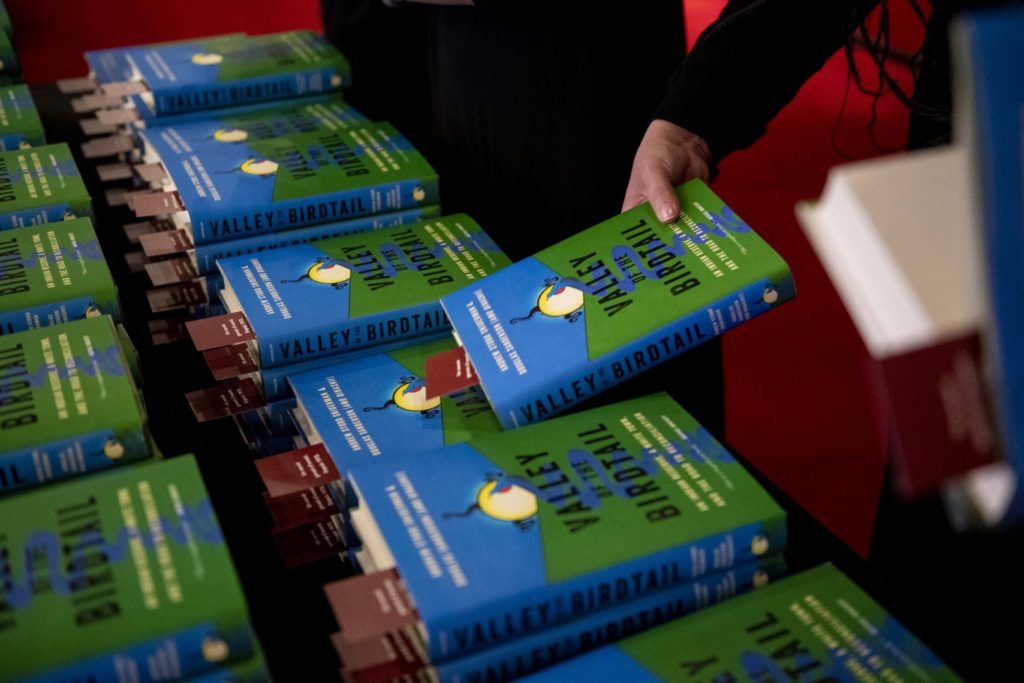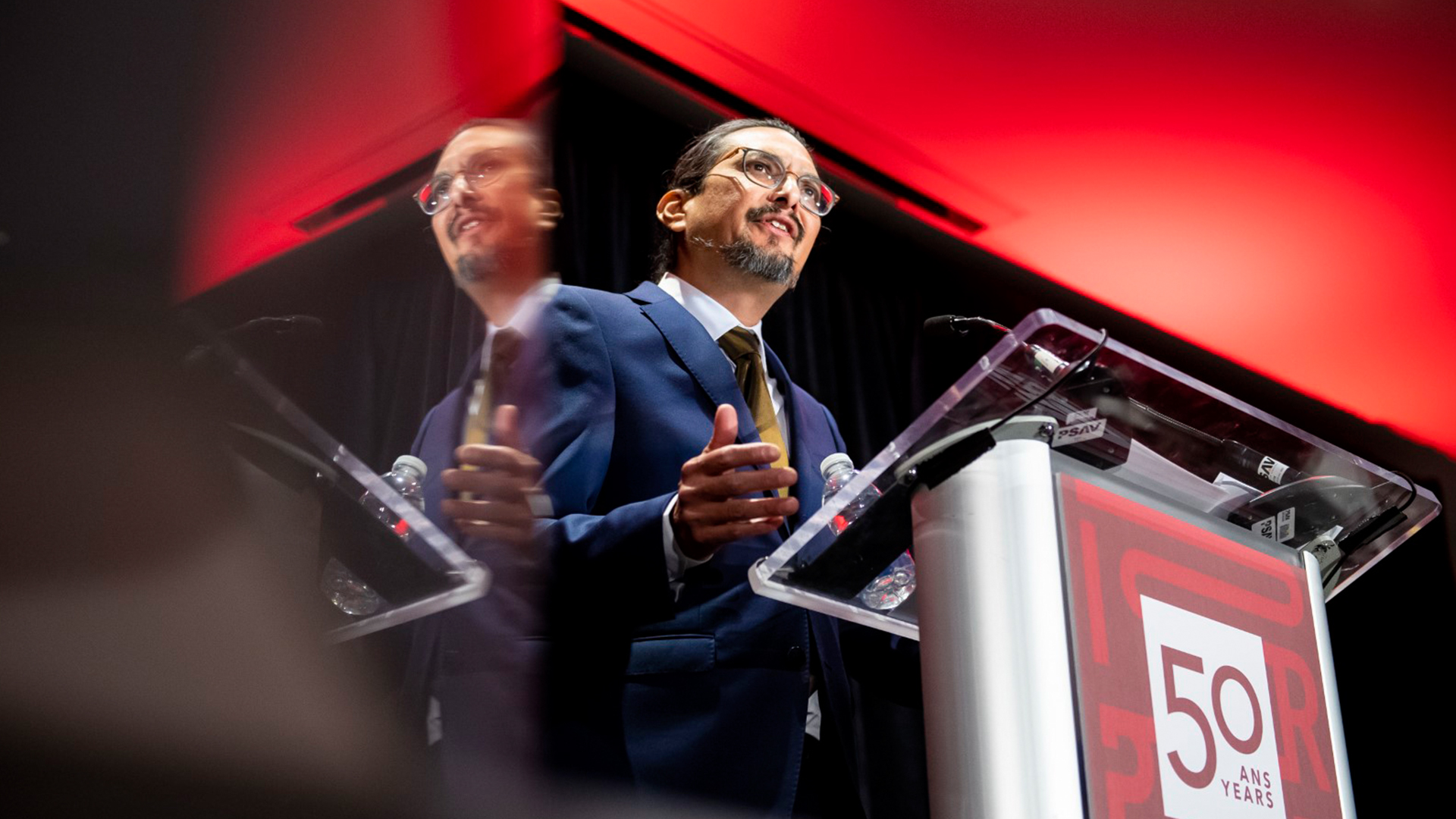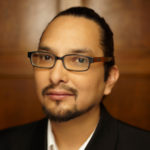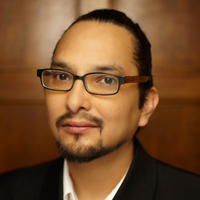
This article is adapted from the keynote address Douglas Sanderson (Amo Binashii) gave at the 50th anniversary gala of the Institute for Research on Public Policy in November. You can read or listen to his full remarks here.
Indigenous people in Canada are largely dispersed into electorally meaningless concentrations. For decades, the idea of the public in public policy almost explicitly excluded Indigenous people. But public policy has always been important to us. Here’s why.
We Indigenous people are overrepresented in the class of citizens without homes, without access to clean water, with poor health outcomes, in prisons and in child welfare systems. At the same time, they are underrepresented in corporate boardrooms, university classrooms, parliament and other spheres of political and economic influence.
Why is it that we as Canadians, who see each other as a moral people – why have we not sought bolder, more consequential change in our relationship with Indigenous people. Why hasn’t Canada adapted to the reality of this situation?
I see two possibilities. First, all too often we are using the wrong words to talk about the Indigenous-settler relationship. Second, it can be hard to fix an injustice if one does not see the full history and extent of the harm. Some combination of these shortcomings has suppressed bold solutions and the political will to enact them.
But before discussing these two ideas, I think it’s important to make it clear that progress is being made. Since the release of the Truth and Reconciliation report we’ve all been trying to do more, to do better. And we are doing more, doing better. Canada now has an Inuk Governor General (Mary Simon) and an Abenaki justice on the Supreme Court (Michelle O’Bonsawin).
So, given the progress we have made, why are we not able to embrace or even imagine bold solutions?
One thing has become clear to me: words matter, because words set out the contours of our debate.
Since Confederation, Indigenous claims for justice have largely fallen on deaf ears. Even after 1982, when Aboriginal rights gained constitutional protection, Indigenous claims are typically honored only after protracted litigation. Throughout it all, we Indigenous people have climbed our well-earned, morally justified, soapbox, and set out our claims. Claims that haven’t much changed in the past 150 years, and that hardly mattered, because until very recently, nobody listened anyway.
Even today, the most visible articulation of Indigenous claims is to be found in the Land Back movement. And if you ask any Indian, they’ll probably say the same, “we want our land back.”
Land back is a simple claim, and it’s a claim that resonates with our general understanding of the dynamic of Indigenous-settler relations. But the simplicity of land back belies an empty claim.
From the author: A grand notion for redesigning Indigenous-settler fiscal relations
Land and things are, in the common law, and, I think, on Indigenous conceptions, fundamentally different kinds of things. Personal property, things like violins or books, can be literally given back. You just hand the thing over to the person from whom you took it. “Violin back” makes perfect legal if not grammatical sense.
Land is different. You can’t actually pack land in a box and return it to a rightful owner. With land, what is being returned isn’t the land itself, but the authority to make decisions over how the land gets used. It’s political, not physical, control over territory.
And this common law understanding of what it is to hold land finds a parallel in Indigenous conceptions. To Indigenous people land isn’t a “thing” or even a “place.” Land is the totality of a spirit world – the sum of not of our rights, but of our duties to the land and the many beings that inhabit her. You can’t give this back to us – this responsibility to the land, the duties of care, it’s not something settler people have ever known, let alone held.

This means that what we Indigenous people want isn’t “our land back” – we want jurisdiction and control over our territory, the authority to make decisions about how land is used, and the right to the benefits that flow from the exercise of those authorities. We want this in part because since time immemorial these lands have maintained Indigenous people in a state of material wealth and spiritual well being. But we also want jurisdiction over our territories because Indigenous people understand ourselves as living in a reciprocal relationship with spirits and beings to whom we owe eternal duties of care, and from whom will come the wisdom, the resources and the love needed to heal a people.
Words really do matter. So, I think we Indigenous people, us academics especially, need to start taking some responsibility for how we talk about Indigenous claims, about how we say what we want. When we demand land back, we allow settler minds to fill with wild speculation. Instead, we should talk about policy objectives that properly represent our relationship to ancestral lands, while at the same time filling in some of the uncertainties about what it means to meet these claims.
We do not want our land back. We want to govern our territories for the good of all our citizens, for the good of all those who reside in our territories, and for all those with whom we could embrace in collective effort. Our goal isn’t land back; our goal is to embrace the duties imposed on us by the land itself.
What this would mean in practice is Indigenous governments with more power – more power to tax, to make law, over more territory. In short, a more powerful Indigenous order of government.
This kind of talk unsettles some people. Righting wrongs is one thing, but redistributing power and resources? That can seem scary, especially when we’re talking about control over land. But I have found that one way to convince people to think boldly is to show them something of our shared past, something of the totality of the harms done to Indigenous people.
Residential schools are part of this story, and a belated reckoning is underway. Many people only learned of residential schools quite recently, but in truth, until faced with the raw physicality of dead children buried in cold earth – we looked away. Hundreds of unmarked graves speak louder than words.
This injustice is so immense, the image so powerful, that we can lose track of the longer chain of injustices. Indian reserves were created to move Indians off the land for white settlers. Reserves broke large communities into smaller, scattered pieces, which had the intended effect of stifling Indigenous governance.
To prevent a reconsolidation of Indigenous power, Indian agents introduced the pass system, which required Indians to get permission to leave their reserves for any reason. Indian reservations became open-air prisons. To prevent isolated communities from healing their broken spirits, Indigenous ceremonies were criminalized until the 1950s. Indian agents believed that as long as Indians danced, they held on to what made them different. So dancing was made illegal.
The Functionary: Kathryn May’s newsletter on the public service
That same indifference led to policies that denied Indigenous people the right to use modern farming equipment on reserves. “A little starvation will do them good,” one remarked. And Indians starved. This long chain of interconnected and overlapping wrongs is documented in my book Valley of the Birdtail, which I co-wrote with Andrew Stobo Sniderman. We also show what happened after residential schools shut down and schools were built on reserves. For nearly 40 years, leading up almost to the present, Indigenous students on reserves were underfunded, dramatically and disastrously so.
This was happening, by the way, while many of the apologies for residential schools were happening. We wronged generations of children. Again. These were all choices. These were policy decisions, made by governments both Liberal and Conservative. Today, we have reasons for hope. For example, thanks to significant investments by the current federal government, there is finally roughly comparable funding for schools on reserves. This marks the first time Indigenous school children have been treated fairly in comparison to non-Indigenous children living off reserve.
We have come so far – we Indigenous people and our settler allies. Canadians genuinely want change, a just future. Now is the time to bring Indigenous Canadians into the confederation of a co-authored Canada. A Canada that is fair to all her citizens. A Canada that chooses hope over despair. A Canada that chooses to right the wrongs of the past.
Together, I believe we can build that Canada. We owe it to the children we left behind, and to the children who are our future.










